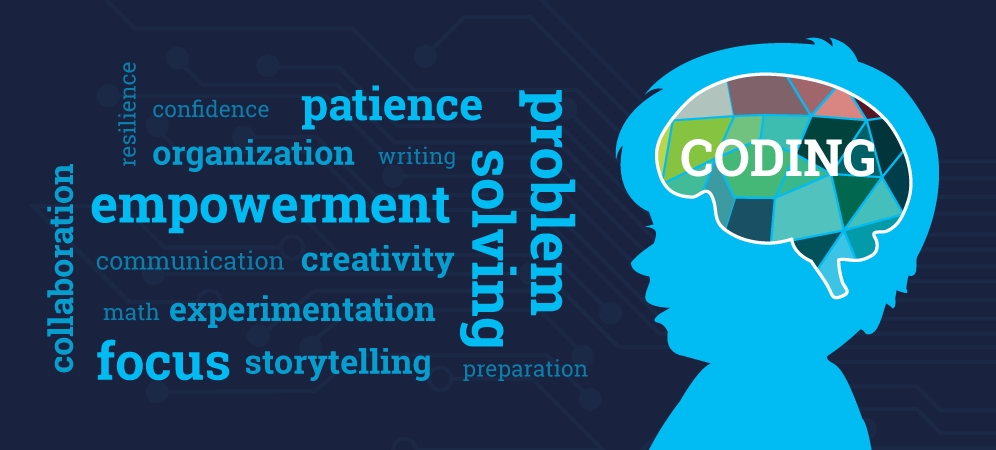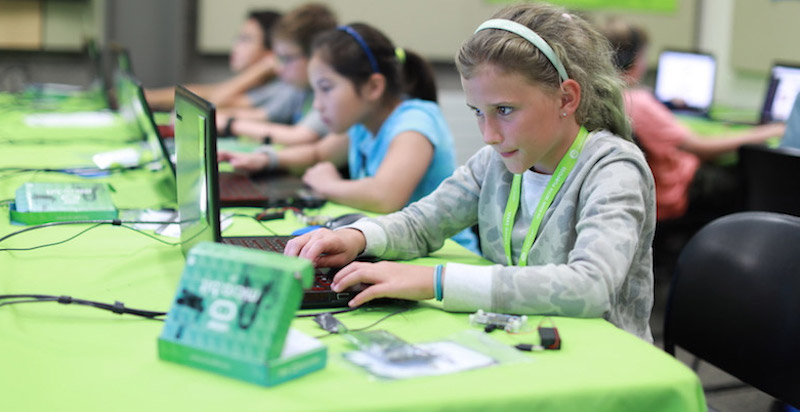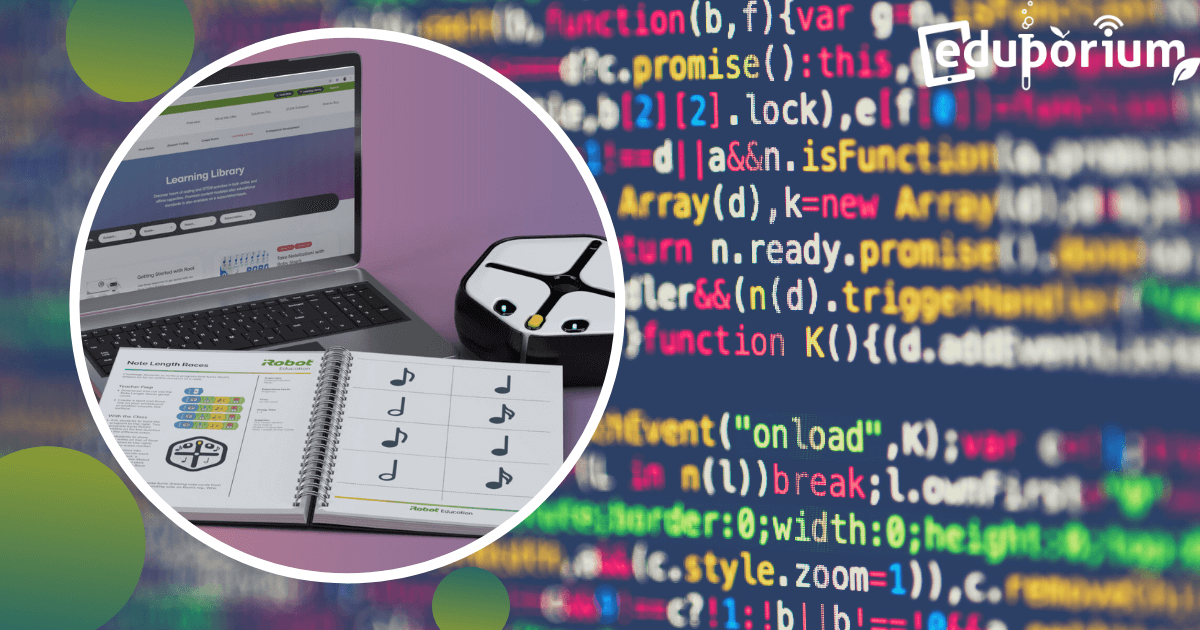We preach a lot about the importance of coding for students to learn for their futures. As a skill, it might just be the most valuable ability they can possess as they move forward. Also, it could leave them far behind everybody else if they are not literate in coding. What we don’t always talk about, however, are the other benefits of learning how to code. Besides knowing programming nuances and mastering various languages, learning coding also helps students learn other valuable skills. Thought of more as soft skills, they are arguably as important as knowing how to code, but teachers don’t need to focus specifically on teaching them because students can often developed them as a byproduct of coding.
Top Reasons Kids Should Learning Coding
Coding is a valuable real-world skill that's becoming more and more imperative for students to learn. The state of the current economy seems to indicate that computer science is going to be a huge component of future jobs, which is only placing a further importance on accelerating the development of coding skills in students. Not to mention, coding skills can help students be first in line for some of the top jobs. More importantly, coding skills help students become more valuable in the workforce, help prepare them for the future, and help them develop other academic skills. Whether additional STEM skills or soft skills, there is a great amount that is learned while students are coding—almost all of which can be transferred to the real world in one way or another.
Translating CS skills to other classes.
When students can coding in the classroom, it’s very common that their academic performance in other areas improves, too. One of those areas is math skills because coding helps students visualize abstract concepts and apply them to problem solving. Coding also helps kids understand the value of what comes next, which helps them better plan things out—especially helpful when developing writing skills. Also, coding helps students develop creativity skills since they are constantly looking for new and innovative solutions while coding. Creativity skills can be applied just about everywhere in education, making coding a very valuable endeavor for every child. Finally, coding helps breed in students build confidence by solving problems in real time. Plus, they can see the fruits of their labor and successes in a way that lets them know they’ve succeeded.
Building soft skills along with digital skills.
In addition to these skills, coding also helps students build soft skills for the real world. These include focus, organization, resiliency, and communication. As their coding gets more complicated as they become more skilled, kids will naturally develop greater focus and organization. As they work to debug coding errors, they can develop their resiliency and, as they solve coding challenges logically, they’ll also bolster their communication skills. Finally, coding also helps kids learn things like empowerment, life skills, and career preparation. When coding, they realize they're empowered with the tools and the means to make a difference, which is very useful in the real world. They also develop greater digital literacy skills and begin building foundational tech skills, which are in high demand. Basically, the skills kids learn through coding are always growing and we’ll explore them more specifically as we go on.
Communication Skills
We’ve hinted at how learning coding skills also leads to students learning other important 21st century skills in the process. One of those fundamental and increasingly important skills is communication. Communication is frequently relied on by workers in today’s economy since so much of work requires collaboration. Though considered a soft skill, having good communication skills means expressing ideas clearly with less of a likelihood for disconnect. The connections between coding and communication skills are fantastic for kids to discover in school and use beyond that. When coding, students are forced to express their ideas clearly, which helps them learn how they should communicate going forward. In this section, we’re going to discuss how coding can help students bolster their communication skills and why this is important for their futures.
The connection between coding and communication.
Coding is all about breaking problems down into pieces that can be communicated and translated to interactions. And, when they’re creating programs of their own, kids are constantly in communication with computers or computer programs. This causes them to carefully consider what needs to be expressed and the most efficient way of doing so. In order to ensure their code is created in exactly the right way, they are forced to communicate each of the required elements in a well-organized manner because computers are not capable of filling in the gaps. Learning to be crystal clear in communication—whether it’s verbal or technological—is a key in the 21st century. Plus, communicating through codes isn’t just about learning programming. Coding is a universal language that can help break down barriers and allow students to interact with each other.
Working coding into other subjects.
Coding is also key in developing communication skills because it enables students to learn a new language. Similar to learning a foreign language, learning to code also means students are learning the basics of a programming language. Many educators have even pushed to have coding be a part of foreign language requirements in schools because, just as learning a foreign language helps kids understand new grammar rules, learning coding helps them recognize and organize patterns in communication and create more clarity. Finally (and we’ll get more into this a bit later on), coding also helps kids develop their writing skills. This isn't a new idea but coding continues to help students better organize information they need to produce something—an idea that’s basically the foundation of effective writing. Coding compels kids to express ideas in the simplest way—something that undoubtedly helps them become clear and efficient writers.

Collaboration Skills
Communication skills are going to be important because kids will be working in teams quite a bit. That’s convenient because another skill that’s both important for the future and something they can learn through coding is collaboration. Sure, kids can learn a lot by coding on their own but, when they work classmates, the whole group can build coding skills and, more importantly, learn to problem solve together. Despite the necessity of developing coding skills, it can be intimidating when first starting and difficult for kids to create programs that work. This is where ‘two (or three) heads are better than one’ really comes into play. The best problem-solving ideas often come when students work together because different students have different strengths. One might be good at designing a potential solution, another might develop it, and somebody else might know how to implementing it effectively.
Collaborating on classroom coding projects.
In order to get students to work together when coding, there are some things educators can do. First, teachers can help guide brainstorming among students before they begin creating a program. This helps students figure out exactly what they want to create by offering general ideas and helping them realize what they're passionate about. Teachers can also suggest that each student in the group owns a unique role throughout the duration of the project. Not only does this clarify responsibilities and make collaboration flow more smoothly, it also helps students experience different real-world roles. They can even discuss with each other and take roles that cater to their strengths—as long as they decide as a group and everybody is okay with their assignments. For coding projects in particular, roles can include code writer, code reviewer, and code debugger!
How collaborating helps with problem solving.
Eventually, students will hit a bump in the road while coding and they might not know how to solve it. This is a good opportunity for teachers to step aside and encourage putting their heads together to design solutions. For example, having students try at least three different solutions collaboratively could lead to them discovering a solution collectively. Also, many coding platforms have various levels of difficulty so that students of all abilities are able to program together. Tools like Scratch and Scratch coding robots offer progressive programming while robotics tools, like the Ozobot Evo and mBot Robot, also provide online environments within which students can work together at a pace that’s comfortable for them. Ultimately, when students face adversity during coding projects, it’s great to reinforce the belief that collaboration can solve problems and that it’s a very useful skill to lean on both now and for the future.
Writing Skills
Among the real-world skills that coding helps students learn is writing—a really important one. You might not realize it, but building programs online is a lot like writing. Students need to think logically about what should come next in order to tell a clear story. Coding is similar to digital storytelling since students can use code to move robots, make objects light up, and more. Educators can have them put robots into a story as characters and describe their movements, including why they're making them. Now, kids can use coding as a medium specifically for telling stories. Whereas writers pretty much only have access to words and sentences, students can use different buttons or blocks and structure them in such a way that tells a story. They can even use pictures, music, and animations for increased flexibility and bringing programming and storytelling to life.
Applying coding to building writing skills.
Whether they’re coding with robots or on one of the various educational programming environments online, students are forced to think about each of the events in their program. Writing a program is like writing a script in the sense that one thing must happen before the next in a sequence. This forces kids to think through the precise details of their code and the potential consequences of each piece. It also helps them to not be vague and realize that the clearer they are, the better their program flows. Also, creating a program out of code pieces requires similar elements to a story, like an engaging hook, for example. Plus, writing is sometimes intimidating for students, especially if staring at a blank page with questions about where to start. When staring at a blank programming field, however, the possibilities are extensive and give them lots of options for building programs.
How coding and writing are complementary.
In writing (and in the real world), it's important to be concise. Coding helps students realize this and learn to include concision in their work by eliminating elements that they don’t need. Learning more advanced coding concepts, like loops and conditionals, for example, allows students to condense the code they need to achieve the same result. They’ll see how being more concise saves them time and makes them more efficient. Finally, students can also learn how to better plan their writing and to effectively organize their thoughts through coding activities. Coding helps kids break down various segments of a story and learn to convey each clearly and concisely. When it comes down to it, writing skills are important and coding activities can help kids improve theirs. At the same time, however, being a better writer can also help students become better programmers, combining two of tomorrow’s most relevant skills.

Coding for Creativity
The last skill we’ll discuss that’s a byproduct of coding is creativity. A key 21st century skill, creativity helps students and adults solve complex challenges—whether they’re using technology or not. As we discussed in the last section, solving problems with code requires that we analyze the problem and work with what we know to come up with a useful solution. Creativity is crucial for kids to learn and they can do so through thought-provoking play, asking questions, and making. As toddlers, children routinely build things with blocks and, as they get older and start coding, they’re probably going to be using a block-based language at one time or another. While doing that, students can develop creativity by embracing an experimenter’s mindset, utilizing whole brain thinking, and having a desire to become a creator rather than a consumer.
Connecting coding and creativity.
One of the essential tenets of creativity is being comfortable with experimenting. It’s okay if students fail a few times when they’re trying to solve a problem, especially while coding. In fact, it’s pretty much an expectation. In order to be creative, students must approach coding challenges with a questioning mindset, which can be taught by encouraging kids to explore their ideas, developing their own questions, and making their own mistakes. Also, in programming, students start by first learning a handful of simple commands that accomplish basic tasks. As they experiment more and more, students gain more confidence to try new things and really start thinking about what the outcome would be if they did one thing versus another. Also, coding gets kids to use their whole brain, especially the right side, which is associated with imaginative, artistic, and intuitive thinking—a few of the cornerstones of creativity.
Taking creative skills beyond coding.
As students see that they can control outcomes based on code they create, their creative confidence grows. Since coding offers them something straightforward, stimulating, and an end goal they’re excited about, students have a greater desire to keep practicing and building creativity in the process. Learning to code is very much like learning a new language and it helps kids become fluent in creativity. This is because students are creating the code rather than consuming it. And, they need this creativity to build the foundation for innovation that they’ll use for the rest of their lives. Coding allows students to use creativity to connect existing ideas with new approaches. It helps them pose new questions and discover new ideas for solutions. And, coding helps students become creative thinkers while also growing into the future problem solvers. Plus, coding is a skill that’s as important as it is fun to develop!
For the latest EdTech, STEM, and 21st century education news, follow us on Twitter and Instagram. Like us on Facebook, too, or sign up for our newsletter for our latest product announcements and offerings. If you have an idea for an Eduporium Weekly theme, send us a message on social media or comment below.



